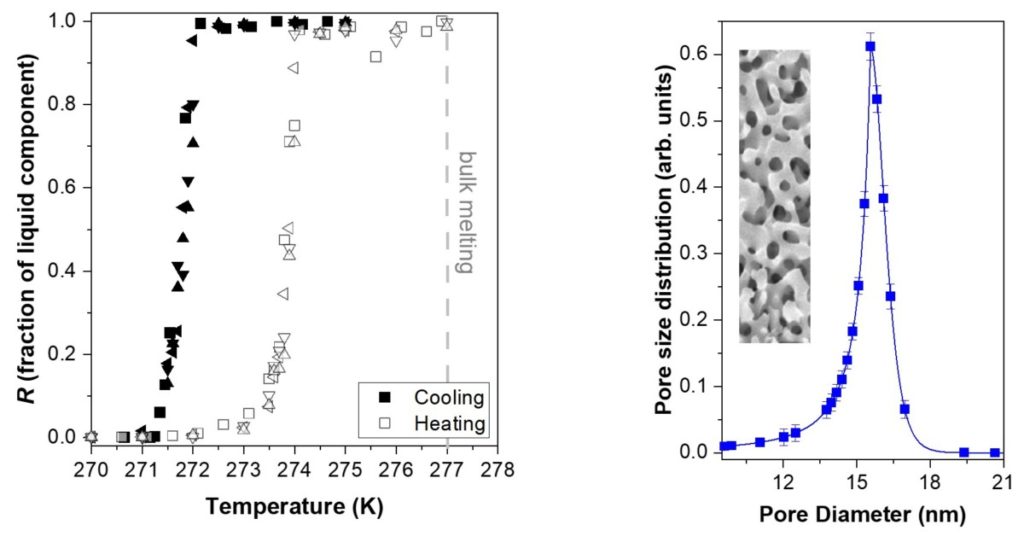Raman Spectroscopy in its confocal configuration can be used to characterize the structure of porous materials having pore volumes of just a few tens of femtoliters. The procedure relies on determining the shift in temperature of the solid-liquid phase transition upon freezing and melting, which depends on the size and shape of the pores. The imbibed liquid is typically water, given the substantial difference between the vibrational signatures of the liquid and solid phases. Provided the pore structure is sufficiently transparent to the laser and Raman scattered light, the technique allows measuring the pore structure with high lateral resolution (~1 µm), which could be particularly useful for determining spatial heterogeneity within a sample. The approach is an excellent complement to NMR cryoporometry, and gas sorption porosimetry (i.e. BET), particularly when sample availability is limited.


